Music Lives Here in Chicago
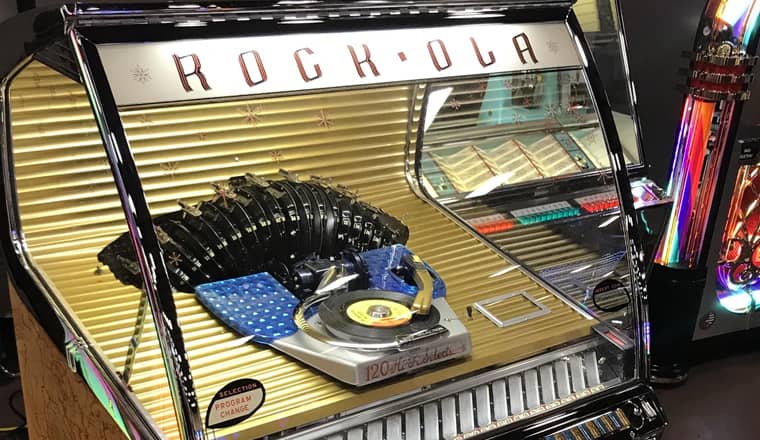
It is tough to be alone.
Music, books, and foodways can form a meaningful bridge to a welcoming place. A point of memory. And inspiration. I thought about these elements while contributing suggestions to the Music Lives Here multi-media project created by the City of Chicago.
The 50 Music Lives Here sites define the raw individualism of the Chicago ethic: Willie Dixon’s Yambo Records, 7771 S. Racine, the pioneering punk club O’Banion’s, 661 N. Clark, the Earl of Old Town, 1615 N. Wells, and many others, obvious and not so obvious.
The Music Lives Here markers are on sidewalks and feature a QR code for time travelers to gather more information. Starting next week a print version with a map and poster will be available at Chicago Public Library branches, the Chicago Cultural Center, and assorted music venues.
The complete list and map of Music Lives Here is right here.
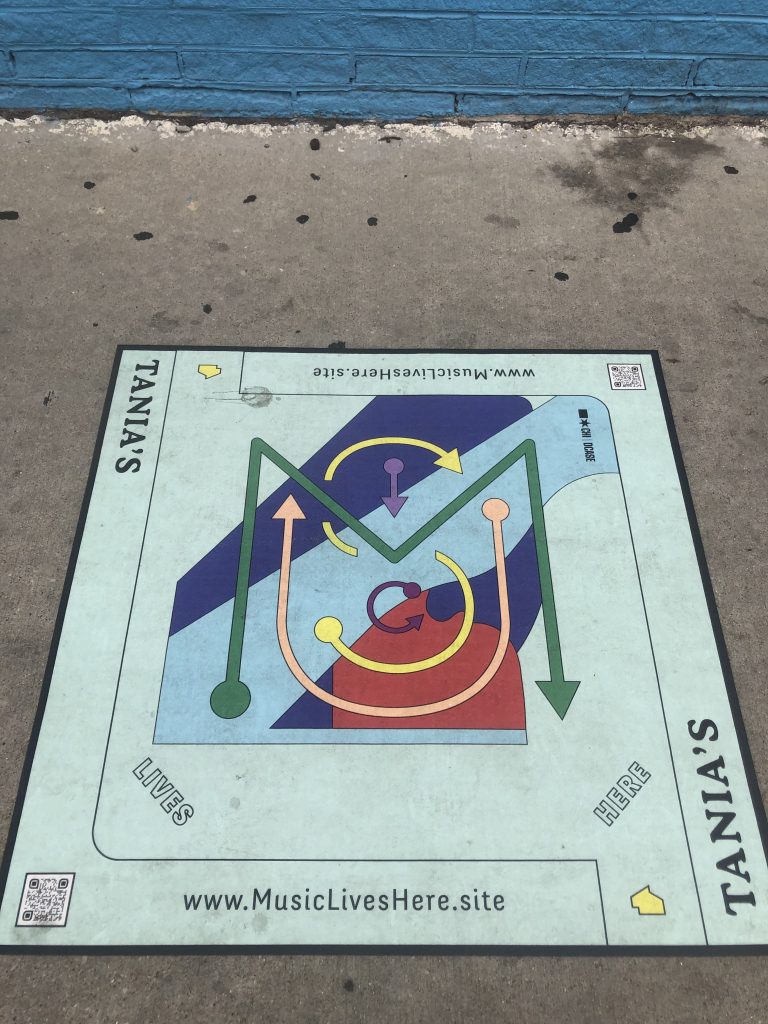
Marker at the former historic Cuban nightclub, Tania’s, 2659 N. Milwaukee Ave.
As I considered Chicago’s immense musical history I thought about what few physical items people brought to Ellis Island and the Great Migration north (roughly 1916-1968), to a new and strange place. But music is ethereal. Any song can contain timeless memories of love and loss. Memory is a passport to possibility and it inspires the future.
I will visit these sites. The Rock-Ola Manufacturing Co. 800 N. Kedzie (at Chicago) Ave. and the Soul Train Studio, in the Chicago Board of Trade Building (CBOT), 141 W. Jackson Ave. made a global imprint. Soul Train was only here between 1970-71, but how many times have you walked by the Art Deco CBOT without knowing that the train started in that spot?
I will try to embrace the neighborhoods. I went to the Rock-Ola site on Tuesday and saw a Popeye’s chicken and a strip mall with a Bargains in a Box store where the music once played. Rock-Ola was here from its beginning in 1927 until it moved to suburban Addison in 1985. I wondered if workers walked over to Humboldt Park on lunch break. Where did the jukebox mobsters hang out? What else happened there and what will happen? The music takes me to another place. That’s what music does. Each remembrance is personal, but the sound is what unites us.
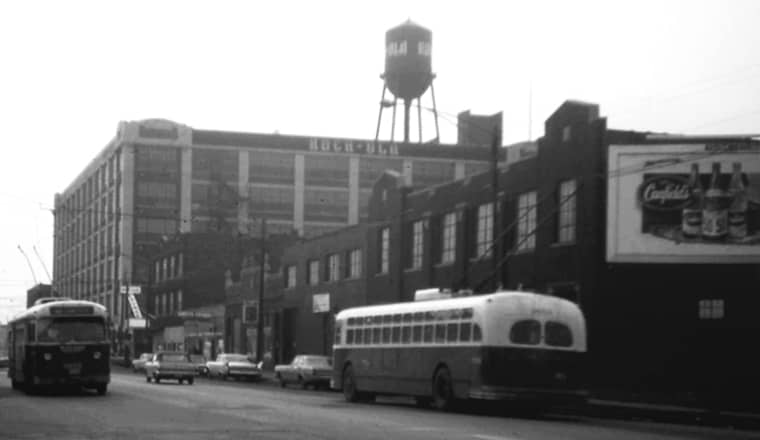
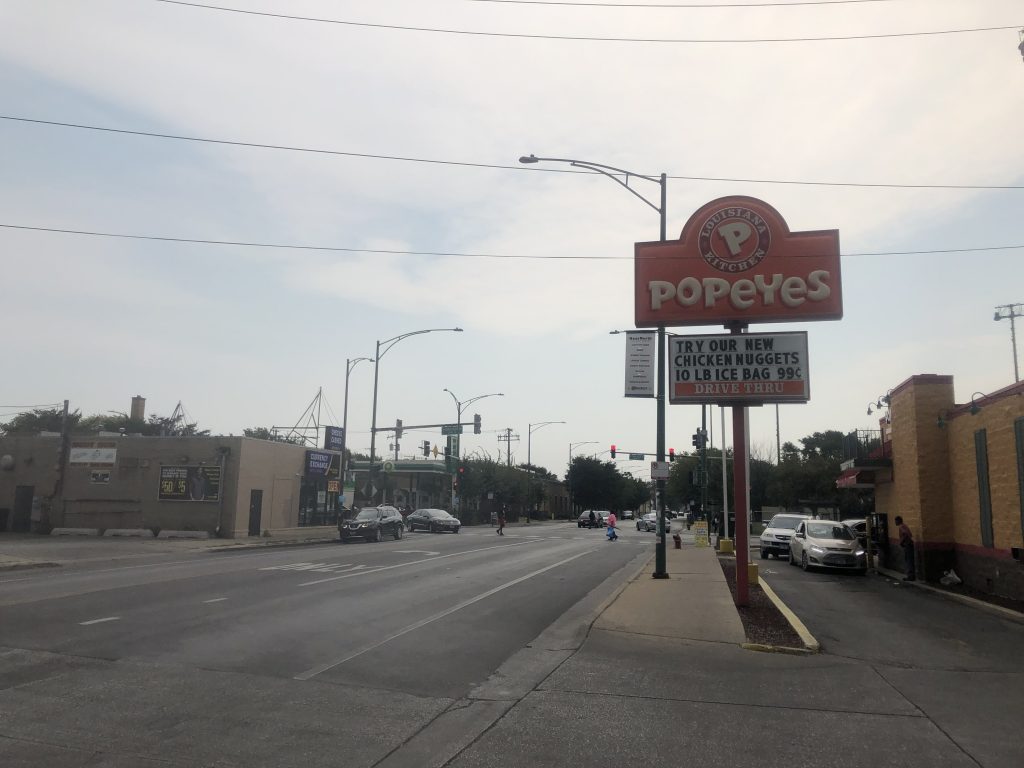
Rock-Ola in Chicago, yesterday and today. “Check Mr. Popeye” was a 1962 jukebox hit for Eddie Bo out of NOLA.
The Music Lives Here markers will be up for at least a year. Music Lives Here was developed by Chicago graphic arts studio Sonnenzimmer and designer Maya Bird-Murphy of the nonprofit Chicago Mobile Makers. Chicago music writer Aaron Cohen provided the website synopsis.
Besides Cohen and myself, the site selection committee consisted of Ayana Contreras, Carlos Flores, Ernest Wilkins, Jose Louis Terrazas, Lori Branch, Margaret Murph Webb, Mateo Mulchay, Pugs Atomz, Ramsey Lewis, and Vince Lawrence. Chicago cultural historian Tim Samuelson was an advisor. The program was developed under the guidance of Lydia Ross, Director of Public Art at the City of Chicago’s Department of Cultural Affairs and Special Events. (DCASE.) It was an honor to be part of this.
To be transparent, we used these parameters:
Physical marker:
* Ability for this site to raise awareness about an unknown narrative about Chicago’s music history.
* Site is foundational to the development of Chicago music.
A second-tier had these criteria for web-only highlights:
* Individual people’s houses/apartments
* Active venue
* Significant info missing.

Back when ladies wore their “thing.”
We worked from a list of hundreds of nominations. I was not part of the final discussions on the final 50. There will be complaints about what’s been missed and hopefully, there will be room to expand the list. Debate is healthy. Every great piece of vinyl has two sides. (Feel free to comment below on your choices.)
For example, it is good to see First Church of Deliverance on the list, but the site of Pilgrim Baptist Church, 3301 S. Indiana should be there. The church was the birthplace of gospel music and it is where Mahalia Jackson mentored the Staple Singers. The historic Polish Broadway in Wicker Park should be included, especially Phyllis’ Musical Inn, 1800 W. Division, not only for the years it entertained thousands of Polish immigrants but also for its rebirth as an important alt-rock club.
I nominated the International Amphitheater, 4220 S. Halsted. The since-razed venue at the foot of the historic Union Stock Yards was the site of the Sept. 5, 1964 Beatles concert and numerous Jackson 5 gigs but was also the late 1960s home base for the Operation PUSH Breadbasket with the SCLC (Southern Christian Leadership Conference) Operation Breadbasket and Choir. The group included Donny Hathaway on keyboards, Gene Barge on alto sax, Wayne Bennett (Bobby Bland) on guitar, and more You can see the Breadbasket band in the background of “The Summer of Soul” documentary.
I also thought Biddy Mulligan’s, 7644 N. Sheridan Rd. was important. There were historic rock shows there for sure. Phish played their first Chicago show at Biddy’s. In 1986 I bought Keith Richards a shot of Jack Daniels the night Chuck Berry sat in with the Neville Brothers in a post-Chicago Blues Festival set. But more importantly, that club reflected Chicago’s beautiful diversity. It was a small Rogers Park club with an Irish name owned by a then-21-year-old Pakistani. How great is that?
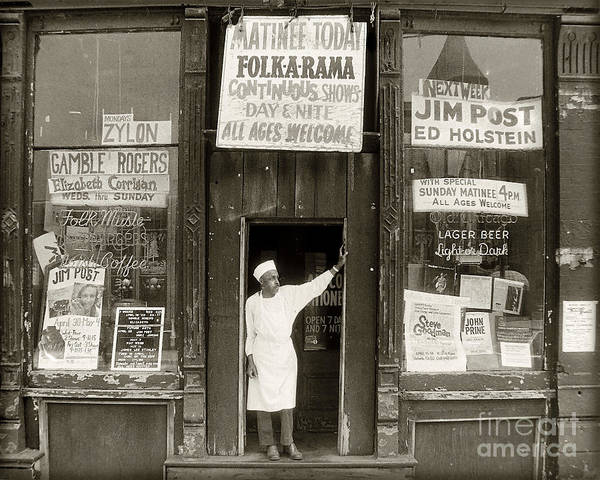
The Earl of Old Town (Steve Goodman, John Prine, etc.) made the cut. You can buy this Martin Konopacki portrait for $20.56 at Fine Art America.
But why complain?
This is an uplifting effort honoring community and conviction. At least the city is doing something to recognize its musical heritage. These are steps in the right direction and perhaps they will inspire bigger things, maybe permanent markers and more.
The folks in Joliet are doing a noble job with the Illinois Rock and Roll Museum on Route 66, but it is not scheduled to open until later this year. It does have a superb online Illinois music radio station But a blues-rock-gospel music museum should be in Chicago.
I maintain that the “State of Sound” exhibit I worked on with Exhibits Director Lance Tawzer at the Abraham Lincoln Museum in Springfield, ll. is the first curated exhibit of Illinois music to appear in a museum. Our show is up through January 2022. (The Chicago History museum did an acclaimed 2018 exhibit on Chicago blues. )
The Chess Records building reminds me of a bad blind date. It could be the entire package, but right now it is a sloppy disappointment. There’s so much potential at 2120 South Michigan if the Willie Dixon family turned even a portion of operations over to museum professionals.
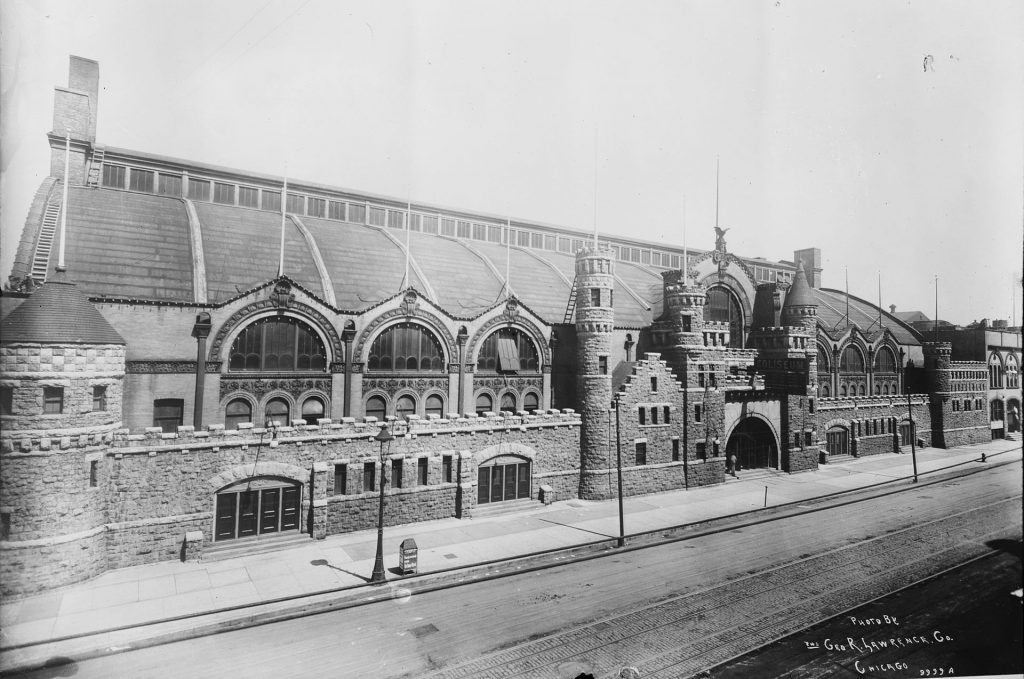
Chicago Coliseum, 1513 S. Wabash is on the Music Lives Here list. Rock bands Cream and the Doors played here in ’68, Martin Luther King spoke here in ’67. Razed in 1982. This version of the Coliseum was built in 1899.
So for now, check out these sites. Bring a friend or travel alone. Maybe the city can sponsor a monthly bus ride with corresponding music and narratives to visit these sites. I’m not doing anything, so I can drive. Except I’d park in front of Curtom Records, 8543 S. Stony Island, and make people listen to positive Curtis Mayfield songs for a couple of hours. Power brokers need to visit the empty lot at 446 E. 47th St. where Gerri’s Palm Tavern once stood and wonder why that history was ever torn down.
Learn that you are not alone. These markers celebrate self-reliance and the willingness to take chances. By stepping out into the unknown you can find a connection. Music Lives Here shapes a communal solace. It is the heartbeat of our city. It is what we all need at this lonely place in time.

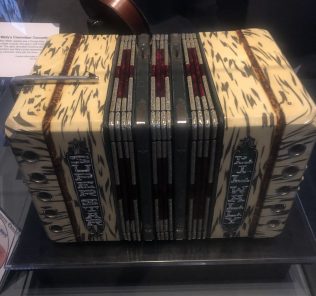
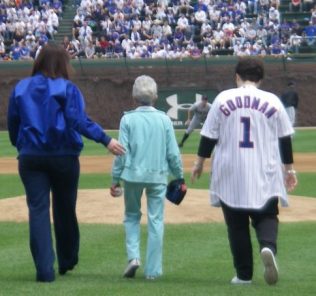
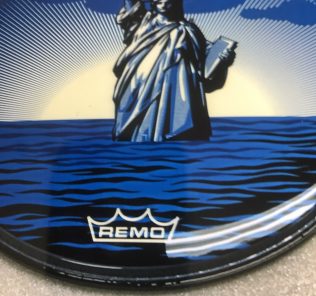
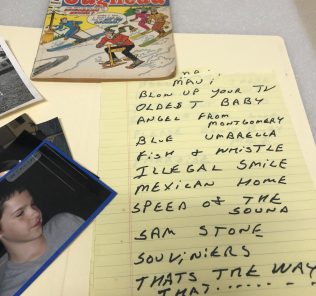


Leave a Response